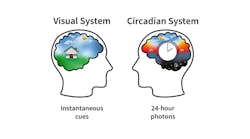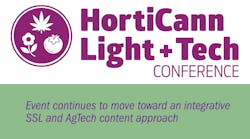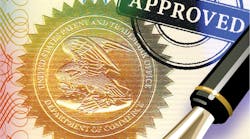In the LED and Lighting Technology Track at the Strategies in Light (SIL) conference, a session entitled "Testing and Speed of Innovation" started with a presentation from Finelite founder Terry Clark describing the burden that lighting manufacturers face with solid-state lighting (SSL) products. Marci Sanders, director of energy efficiency programs at D&R International, followed with news that the US Department of Energy (DOE) is working to simplify the process of manufacturers' receiving Lighting Facts Label recognition for multiple related products in a family.
Clark described how currently manufacturers must perform LM-79 testing on every model in a product family. That can mean essentially testing the same product multiple times with small variations such as in lumen output or color temperature. According to Clark, the cost of such testing is not sustainable, and the requirement is slowing innovation.
Clark called on the DOE to take action. If Clark knew about the news coming in the succeeding presentation, he hid that fact well. Because Sanders publicly revealed, for the first time, that the DOE had been working on a plan for many months to simplify the process.
Working under contract to the DOE, D&R International rolled out the existing Lighting Facts programs four years ago. And now the consultancy is leading the way for the changes.
The revised program will allow lighting manufacturers to group related products in a family and only fully test one of the products in the family to the LM-79 standard. The manufacturer will then calculate or extrapolate performance figures for other products in the family for submission to the Lighting Facts program.
Sanders said that the new program will be phased in. For now, only lighting manufacturers with at least a year of history in the program, ten or more products submitted previously, and a clean track record will be allowed to participate. Sanders said, "It will be based on history and experience with the program."
Each manufacturer will define its own related products grouping and the method by which they will calculate results for the products that don’t go through testing. The Lighting Facts program will review and approve that work before manufacturers can get the Lighting Facts listing.
Verification testing
According to Sanders, the DOE will do random testing of products that are recognized via the new program. She said the DOE will randomly select 5% of the submitted products for testing – about 30 products per month at the start.
Sanders said that the team working on the revised program had considered a number of different ways to pay for the verification testing. One possibility was a fee that all lighting manufacturers participating in Lighting Facts would pay. Instead, the DOE will make the company whose product is selected for testing cover the cost.
To test the products, the DOE will buy a product on the commercial market and then pay a test lab to verify the performance. Sanders said, "If you draw the short straw, someone is going to send you an invoice."
In actuality, companies that participate truthfully will find the occurrence of their products being tested and verified decrease over time. The DOE will weigh the sampling process so that companies with a good track record over time supplying accurate data will be selected for verification less frequently. Sanders said, "Truth in reporting can pay off."
Manufacturer-supplied data on products that don’t fall within accepted tolerance will result in the DOE giving the company a chance to correct the data. Failure to do so will result in companies losing the privilege of participating in the new program.
The DOE hopes to begin the program this April. Verification testing is slated to begin in June.




